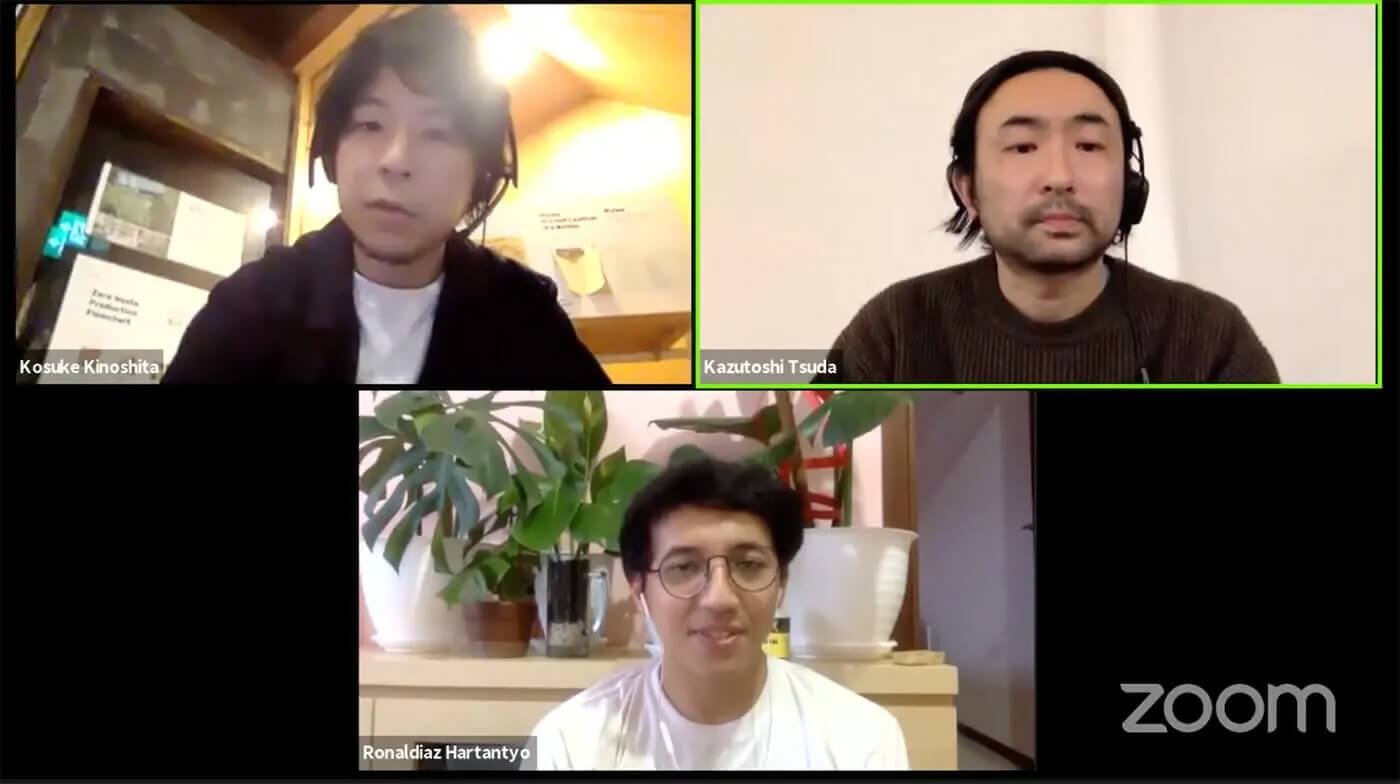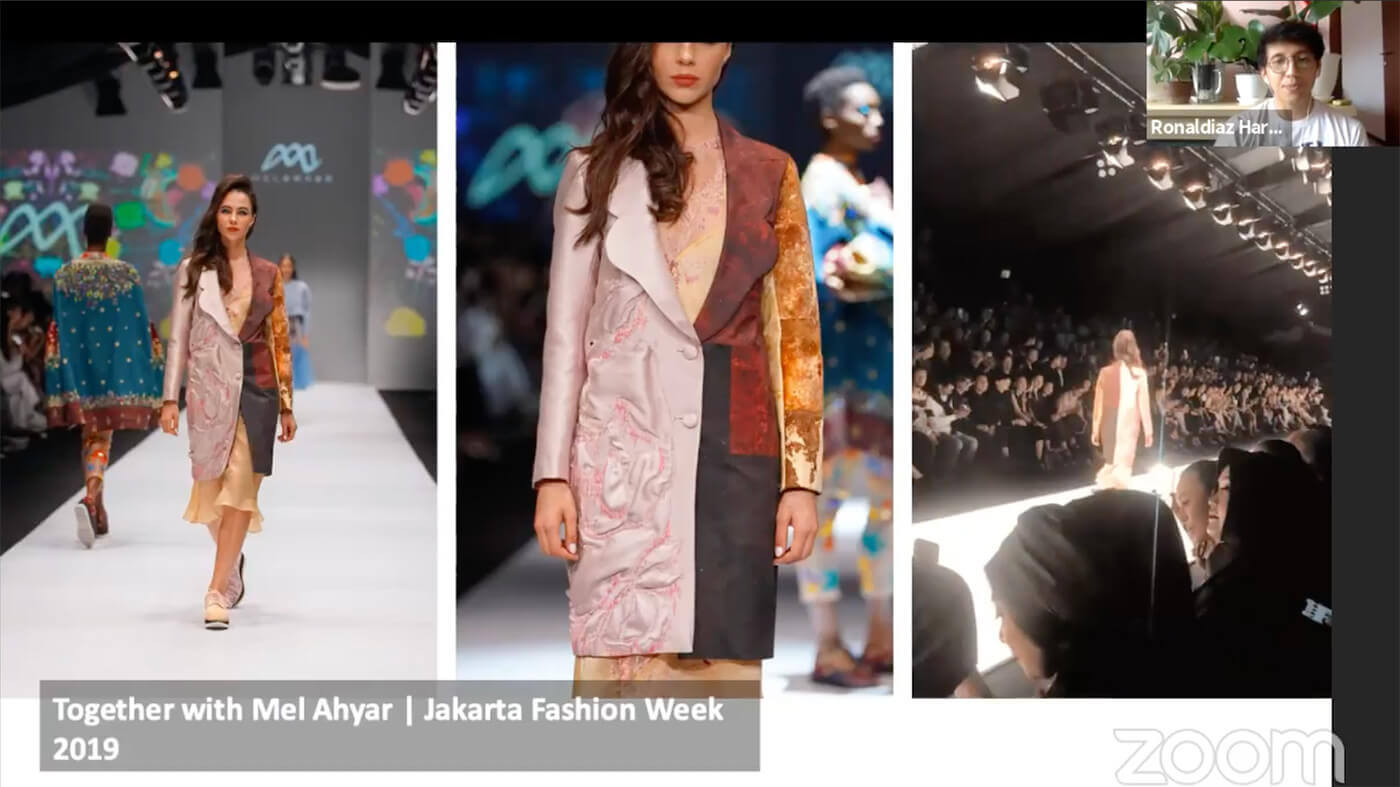
Creating A Sustainable Future For Manufacturing Through Vegan Leather
As the global call for sustainability grows, vegan leather has been attracting attention as a new material with low environmental impact. Currently, most vegan leathers use chemical materials as adhesives, but Indonesian bio-startup Mycotech Lab has developed a vegan leather made out of plant fibers, such as agricultural waste, with mushroom mycelium as an adhesive.
As mycelium has been a topic of focus of FabFuture, a project exploring, designing and innovating solutions for a self-reliant future, FabCafe Kuala Lumpur invited Mycotech to hold a talk about its work in July 2020, which led to an individual exhibition about mushroom leather and Mycotech Lab’s products at FabCafe Kyoto later in the year.

“Mylea” leather and “Biobo” bricks
Inspired by tempeh, an Indonesian fermented soybean food product, Mycotech Lab created “Biobo”, a brick-like building material through hardening fibers with mushroom mycelium that can be used in construction and interior design.


It then developed Mylea, a vegan leather using mushroom mycelium, and collaborated with a local farm to operate a mushroom leather factory, creating jobs and opportunities in the local community. The company is now working with Indonesian fashion designers and other creatives to develop a variety of products.

A system connecting agriculture and forestry
During the discussion, Ronaldiaz Hartantyo, the co-president of Mycotech Lab, pointed out the company paid special attention to the environmental impact of cattle breeding and production during the development process of the materials. Mylea is not only free of animal products, but also has a manufacturing process that does not impact the environment.

With an emphasis on not only making vegan leather, but to creating a system to do so. As such, Mycotech Lab’s vegan leather uses mycelium to connect waste products from agriculture and forestry, such as wheat bran and bark respectively. The goal was to create a system that connects the production and disposal processes.
The next step, and the major challenge in the future, is to seamlessly integrate the production activities of each of the industries into the current infrastructure, which is currently fragmented and not related to each other in Japan today.
Using FAB to under structures obscured by division of labor
While industrial products have been hailed in the past for producing long-lasting products in large quantities, with the same quality, and at low cost, how should companies and individuals think about their use-by dates as they begin to develop sustainable industrial products? And at the same time, how should we prioritize our value criteria when the idea of “how to dispose” has not been given much thought?
The efficiency and division of labor in modern society has brought about mass production and stable supply. At the same time, however, that division has led to a high degree of specialization in each process, making it difficult to complement each other or to make flexible changes when problems arise in any stage of the process.
From creation to disposal, an understanding of what kinds of materials are made, how they are used, how they are disassembled and what responsibilities accompany these activities, would help facilitate knowledge of which areas could be altered to achieve a more sustainable future.
The Fab and Maker processes have been effective in understanding the life cycle of such things. The terms “Fab” and “Makers’ Movement” have frequently been associated with “making your own things by yourself,” as an individual’s creative activity. However, by positioning it again as an important approach to the sustainability of production activities, several important points for future industries become evident.
Digital technology and open data and knowledge sharing mean citizens have the power to create their own products, allowing them to also challenge ideas and experiments that have been discarded in the past over costs and standards. Not only that, open sharing could even lead to breakthroughs in the manufacturing process.
Own "evaluation axes" and evidence of practices
As the world works toward a sustainable society, countries are creating new regulations to achieve goals such as the United Nations’ Sustainable Development Goals, Carbon Zero, and other initiatives. However, as these rules and evaluation criteria are set from the top down, people can become obsessed with how to meet the criteria, eventually becoming detached from the question of whether they are essentially practicing sustainable production activities.
This reasoning led Mycotech Lab to create their own evaluation criteria. The team started small, presenting their own evaluation axis by verbalizing and quantifying the vision and values they are aiming for. Then through constantly experimenting and verifying and providing evidence of its own effectiveness, Mycotech Lab has created a space where it can be evaluated.
The startup came up with several different metrics for its ratings, such as measuring the environmental burden caused by the production of cowhide and the employment conditions in industrial-related areas.

Creating A Circular Economy
With a goal of “no disposal”, Ronaldiaz says the focus is on improving the environment through the production process. In the future, people cannot just use resources but must establish a new production method that promotes the continuous circulation of resources – a circular economy. In this economy, things that have been treated as waste will no longer be discarded but instead are recycled and regarded as resources.
Of course, resources are limited, but at the same time, as social and economic norms change day-by-day all over the world, there are countless things that can be managed through the one-way, mass production approach. Now is the time to create a flexible system of production and consumption, sharing knowledge from around the world.










